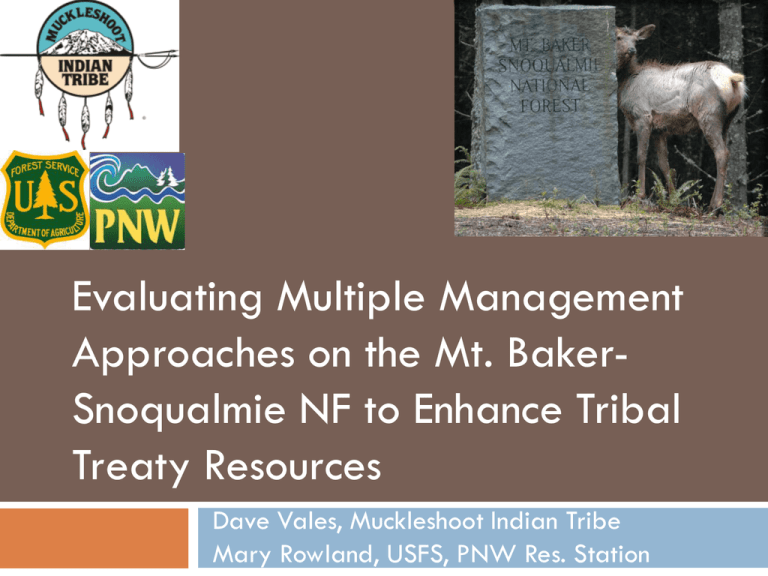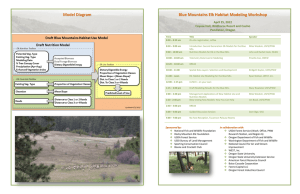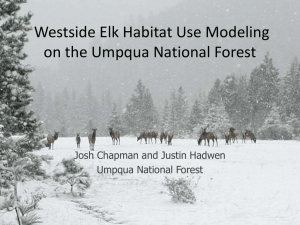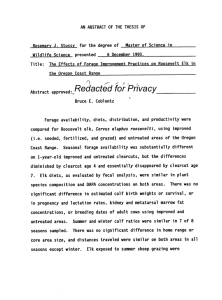Evaluating Multiple Management Approaches on the Mt. Baker- Treaty Resources
advertisement

Evaluating Multiple Management Approaches on the Mt. BakerSnoqualmie NF to Enhance Tribal Treaty Resources Dave Vales, Muckleshoot Indian Tribe Mary Rowland, USFS, PNW Res. Station Topics to be covered: Project background Importance of elk in this region Prior land management Huckleberry Land exchange PNW Research Station grant Example applications in the White River area Nutrition and Elk Habitat Use Model results Conclusions Importance of elk in the region Point Elliott Treaty area 9 Tribes + state MBSNF 30% land MBSNF 60% GMU 653 LSR, RR, wilderness White River elk herd Huckleberry Land Exchange USFS traded 1,280 acres 80-year old forest to Weyerhaeuser in White River USFS received 10,938 acres from Weyerhaeuser, net gain ≈9,100 acres Blocked up management but limited activity on received parcels 3,360 acres designated 8E, Greenwater Special Area for elk and deer forage habitat USFS would create 400-500 ac forage openings on winter range and 100-130 on summer range Areas within 8E but outside forage areas will be managed as Late Successional Reserve (LSR) Muckleshoot Analysis Area Management Alternatives Considered Alternative Existing condition Alternative 1 Alternative 2 Alternative 3 Description Heavily forested, all National Forest lands (White River Ranger District), primarily LSR Planned treatments of Elk Forage Areas (0% CC) and Upper White River Thinning Units (60% CC), plus opening roads to access units As above, only thinning to 0% CC As in Alt. 1, but with roads closed after thinning Muckleshoot Analysis Area, MBSNF Elk Forage Analysis Area (18,540 acres) 443 acres Thinning Unit Analysis Area (22,230 acres) 2,150 acres 68,800 acres Modeling Results – Nutrition DDE Classes Used in Summaries Class 1 2 3 4 5 6 Description Poor Low-marginal High-marginal Low-good High-good Excellent Mean DDE <2.4 2.40 – 2.575 >2.575 – 2.75 >2.75 – 2.825 >2.825 – 2.9 >2.90 ELK FORAGE AREAS Existing Condition Alternative 1 THINNING UNITS Existing Condition Alternative 1 Alternative 2 Modeling Results – Habitat Use Elk Forage Areas Existing condition Alternative 1 Thinning Units Existing condition Alternative 1 Thinning Units Alternative 2 Alternative 3 Summary Harvests as planned will lead to real, local benefits to elk nutritional resources and use Ability to thin to lower canopy cover levels would yield much greater benefits Coordinated, strategic planning of timber harvest and road management is critical Thanks to: Muckleshoot Indian Tribe Melissa Calvert Mike Middleton U.S. Forest Service, PNW Research Station CRAG U.S. Forest Service, Mt. Baker-Snoqualmie Natl. Forest Sonny Paz Jessie Plumage Paula James Doug Schrenk







